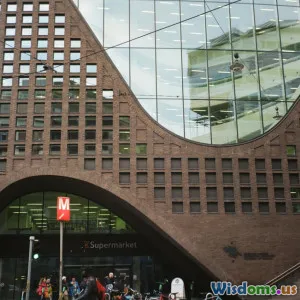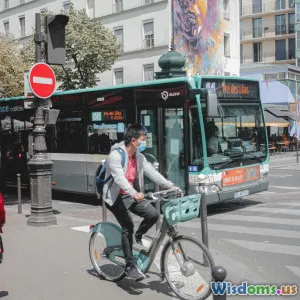
The Impact of MaaS on Cities
6 min read Explore how Mobility as a Service (MaaS) transforms urban transportation, improving efficiency and sustainability. (0 Reviews)
The Impact of MaaS on Cities
Introduction
In recent years, Mobility as a Service (MaaS) has emerged as a transformative concept in urban transportation. By integrating various transportation services into a single accessible platform, MaaS offers a user-centric approach that prioritizes convenience, efficiency, and sustainability. This article explores the impact of MaaS on cities, examining its benefits, challenges, and future potential.
What is MaaS?
MaaS refers to the integration of multiple modes of transportation into a unified service that can be accessed through a single application or platform. This includes public transit, ride-sharing, bike-sharing, and even walking routes, allowing users to plan, book, and pay for their journeys seamlessly. The goal is to provide an alternative to private car ownership, promoting a more connected and efficient transportation ecosystem.
Benefits of MaaS for Cities
1. Enhanced Accessibility
MaaS platforms can significantly improve accessibility for residents, particularly those without access to personal vehicles. By providing detailed information about available transport options, MaaS enables users to make informed decisions, ultimately increasing mobility for all citizens, including the elderly and disabled.
2. Reduced Traffic Congestion
One of the primary challenges facing urban areas is traffic congestion. By promoting public transport and shared mobility options, MaaS can help decrease the number of private vehicles on the road. This reduction not only alleviates congestion but also contributes to lower emissions and improved air quality.
3. Sustainable Urban Development
MaaS encourages the use of environmentally friendly transportation methods, such as electric buses and shared bicycles, aligning with sustainability goals. Cities can leverage MaaS to create more pedestrian-friendly environments, reducing the need for extensive parking spaces and promoting greener urban design.
4. Economic Efficiency
MaaS can lead to cost savings for municipalities by optimizing public transportation routes and reducing the need for costly infrastructure projects. Moreover, by increasing the utilization of existing transport services, cities can generate additional revenue through fare collection and partnerships with private mobility providers.
Challenges of Implementing MaaS
While the benefits of MaaS are substantial, cities also face significant challenges in its implementation:
1. Data Privacy and Security
MaaS relies heavily on data collection and sharing among various service providers. Ensuring user privacy and data security is paramount to gaining public trust and encouraging adoption.
2. Integration of Services
Achieving seamless integration of diverse transportation services requires collaboration between various stakeholders, including public transport agencies, private mobility providers, and regulatory bodies. This can be a complex process, often hindered by differing priorities and operational challenges.
3. Infrastructure Limitations
Many cities may lack the necessary infrastructure to support an effective MaaS system. Investments in technology, including real-time data systems and payment integration, are essential for the success of MaaS initiatives.
Case Studies of Successful MaaS Implementation
Several cities around the world have begun to integrate MaaS into their transportation systems with promising results:
1. Helsinki, Finland
Helsinki has been at the forefront of MaaS development, launching the Whim app, which allows users to plan and pay for various transport options in one place. This initiative has reduced the reliance on private cars and enhanced public transport usage.
2. Antwerp, Belgium
Antwerp's Mobility as a Service (MaaS) initiative combines public transport, bike-sharing, and car-sharing services. The city has seen a significant increase in the use of public transport and shared mobility options, leading to reduced congestion and emissions.
The Future of MaaS in Urban Transportation
As cities continue to grapple with the challenges of urbanization, MaaS presents a viable solution to enhance transportation efficiency and sustainability. The future of MaaS hinges on:
- Public-Private Partnerships: Collaboration between government and private sector entities will be crucial for successful MaaS implementation.
- Technological Advancements: Continued advancements in technology, such as AI and IoT, will facilitate more efficient services and better user experiences.
- Policy and Regulation: Governments must develop supportive policies that encourage innovation while ensuring safety and equity in transportation.
Conclusion
Mobility as a Service has the potential to revolutionize urban transportation systems, making them more efficient, accessible, and sustainable. While challenges remain, the successful implementation of MaaS can lead to significant benefits for cities and their residents. By embracing this innovative approach, cities can create a more connected and sustainable future.
Rate the Post
User Reviews
Popular Posts





















